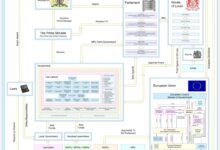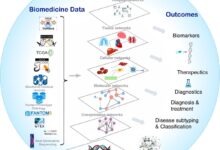System Logs: 7 Powerful Insights Every Tech Pro Must Know
Ever wondered what your computer whispers behind the scenes? System logs hold the secrets—revealing everything from crashes to cyber threats. Let’s decode their power together.
What Are System Logs and Why They Matter

System logs are detailed records generated by operating systems, applications, and network devices that document events, errors, and activities occurring within a computing environment. These logs serve as digital diaries, capturing timestamps, user actions, system states, and security alerts. Without them, troubleshooting would be like navigating a maze blindfolded.
The Anatomy of a System Log Entry
Each log entry is structured to provide clarity and context. Understanding its components helps in accurate interpretation and faster diagnosis of issues.
- Timestamp: Records the exact date and time of the event, crucial for tracking sequences and correlating incidents across systems.
- Log Level: Indicates severity—ranging from DEBUG and INFO to WARNING, ERROR, and CRITICAL. This helps prioritize responses.
- Source Identifier: Specifies which process, service, or device generated the log (e.g., kernel, Apache, firewall).
- Message: A human-readable description of the event, often including error codes or user IDs.
“Logs are the breadcrumbs that lead you to the root cause,” says cybersecurity expert Troy Hunt. “Ignore them at your peril.”
Common Types of System Logs
Different systems generate distinct types of logs, each serving a unique purpose in monitoring and analysis.
- Event Logs (Windows): Managed via Event Viewer, these include Application, Security, and System logs. For example, Windows Security logs track login attempts and policy changes.
- System Logs (Linux/Unix): Typically stored in
/var/log, they include messages, auth.log, kern.log, and syslog. Thersyslogdaemon manages most of these. - Application Logs: Generated by software such as web servers (Apache, Nginx), databases (MySQL, PostgreSQL), and custom enterprise apps.
- Security Logs: Include firewall logs, intrusion detection system (IDS) alerts, and antivirus reports.
Understanding where and how these logs are stored is essential for effective system administration. For instance, Linux systems use standardized logging protocols defined by RFC 5424 (Syslog), ensuring interoperability across devices.
The Critical Role of System Logs in Cybersecurity
In today’s threat landscape, system logs are not just diagnostic tools—they are frontline defense mechanisms. They enable early detection of malicious activity, support forensic investigations, and ensure compliance with regulatory standards.
Detecting Unauthorized Access and Intrusions
One of the primary uses of system logs in security is identifying unauthorized access attempts. Failed login entries, repeated SSH connection errors, or unexpected privilege escalations are red flags.
- For example, multiple
Failed passwordentries in/var/log/auth.logmay indicate a brute-force attack. - Windows Security logs can reveal suspicious account logon events (Event ID 4625 for failed logins).
- Firewall logs showing outbound traffic to known malicious IPs can signal data exfiltration.
Tools like OSSEC or Elastic SIEM automatically analyze these logs to detect anomalies and trigger alerts.
Supporting Incident Response and Forensics
When a breach occurs, system logs become the primary source of truth. They help answer critical questions: Who accessed the system? When? What did they do?
- Logs can reconstruct attack timelines, such as identifying lateral movement within a network.
- They assist in determining the scope of compromise—whether one server or an entire domain was affected.
- During legal proceedings, properly maintained logs can serve as admissible evidence.
According to the SANS Institute, over 70% of incident investigations rely heavily on log data for root cause analysis.
“You can’t protect what you can’t see. Logs give you visibility,” emphasizes Mandiant’s Kevin Mandia.
How Operating Systems Handle System Logs
Different operating systems manage system logs using unique architectures and tools. Understanding these differences is vital for cross-platform administration and troubleshooting.
Windows Event Logging Architecture
Windows uses a centralized logging system called the Windows Event Log service, which organizes logs into channels: Application, Security, Setup, System, and Forwarded Events.
- Each event is assigned an Event ID, Source, Level, and User context.
- Administrators access logs via Event Viewer (
eventvwr.msc) or PowerShell cmdlets likeGet-WinEvent. - Security logs require elevated privileges to view and are often protected by Group Policy settings.
For example, Event ID 4688 logs process creation, helping detect malware execution. Microsoft provides a comprehensive Event ID reference guide for security auditing.
Linux and Unix Logging with Syslog
Linux systems traditionally rely on the Syslog protocol, governed by RFC 5424, to collect and route log messages.
- The
rsyslogorsyslog-ngdaemons handle message reception, filtering, and storage. - Key log files include:
/var/log/messages– General system activity (on older systems)/var/log/syslog– Main log file on Debian/Ubuntu/var/log/kern.log– Kernel-specific messages/var/log/auth.log– Authentication logs (SSH, sudo)
- Log rotation is managed by
logrotateto prevent disk exhaustion.
Modern Linux distributions also use journald (part of systemd), which stores logs in binary format and offers advanced querying via journalctl. You can filter logs by service (journalctl -u ssh.service) or time range (journalctl --since "2 hours ago").
“journald brings structure to chaos,” notes Linux Foundation developer Lennart Poettering.
Best Practices for Managing System Logs
Collecting logs is only the first step. Effective management ensures they remain useful, secure, and compliant with organizational policies.
Centralized Log Collection and Aggregation
In large environments, logs scattered across servers are nearly impossible to monitor manually. Centralization solves this problem.
- Tools like Graylog, ELK Stack (Elasticsearch, Logstash, Kibana), and Splunk aggregate logs from multiple sources into a single dashboard.
- They support real-time monitoring, alerting, and advanced search capabilities.
- Agents like
FilebeatorFluentdforward logs securely to central servers.
For example, a DevOps team might use Kibana to visualize error spikes across microservices after a deployment, quickly pinpointing the faulty component.
Log Retention and Rotation Policies
Without proper retention strategies, logs can consume excessive disk space or be lost prematurely.
- Define retention periods based on compliance needs (e.g., 90 days for PCI-DSS, 1 year for HIPAA).
- Use
logrotateto compress old logs and delete them after a set period. - Archive critical logs to cold storage or cloud buckets (e.g., AWS S3 with lifecycle policies).
A well-configured /etc/logrotate.conf prevents outages caused by full disks—a common issue in production environments.
“A server crash due to full logs is preventable—and embarrassing,” warns sysadmin blogger Bryan Helm.
Tools and Technologies for Analyzing System Logs
Raw logs are overwhelming without the right tools. Modern solutions transform unstructured data into actionable insights through parsing, correlation, and visualization.
Open-Source Log Management Platforms
Several powerful open-source tools empower organizations to analyze system logs without high licensing costs.
- ELK Stack: Elasticsearch indexes logs, Logstash processes them, and Kibana provides dashboards. Ideal for scalable, real-time analytics.
- Graylog: Offers built-in alerting, role-based access control, and stream processing. Easier to set up than ELK for beginners.
- Fluentd: A data collector that unifies logging layers, supporting over 500 plugins for input/output formats.
These platforms parse logs using grok patterns (in Logstash) or extractors (in Graylog) to structure unstructured text—turning "Failed login for user admin from 192.168.1.100" into searchable fields.
Commercial Solutions for Enterprise Scale
For large enterprises, commercial tools offer enhanced support, scalability, and integration with existing IT ecosystems.
- Splunk: Dominates the market with powerful search processing language (SPL) and machine learning capabilities.
- Datadog: Combines log management with infrastructure monitoring and APM (Application Performance Monitoring).
- Sumo Logic: Cloud-native platform with automated log analysis and compliance reporting.
Splunk, for instance, can correlate Windows Event Logs with firewall logs to detect multi-stage attacks, reducing mean time to detection (MTTD).
“Splunk turns noise into knowledge,” says Gartner analyst David Wright.
Common Challenges in System Log Management
Despite their value, managing system logs comes with significant challenges that can undermine their effectiveness if not addressed.
Log Volume and Noise Overload
Modern systems generate terabytes of logs daily. Sifting through irrelevant entries to find critical issues is like finding a needle in a haystack.
- Too many DEBUG or INFO messages drown out real threats.
- Default logging levels often lack tuning, leading to excessive verbosity.
- Without filtering, alerts become desensitizing—a phenomenon known as “alert fatigue.”
Solution: Implement log filtering and prioritization. Use tools to suppress low-severity logs from trusted sources and highlight anomalies using AI-driven baselines.
Data Integrity and Tampering Risks
Logs are only trustworthy if they haven’t been altered—by attackers or insiders.
- An intruder may delete or modify logs to cover their tracks.
- Local log storage is vulnerable if the host is compromised.
- Time synchronization issues (e.g., incorrect system clocks) distort event timelines.
Mitigation strategies include:
- Sending logs to a remote, immutable log server.
- Using write-once-read-many (WORM) storage or blockchain-based logging solutions.
- Enabling log integrity checks via hashing (e.g., SHA-256 signatures).
“If logs can be tampered with, they’re worthless,” states NIST Special Publication 800-92.
Future Trends in System Logs and Log Analytics
As technology evolves, so do the methods and expectations for system logs. Emerging trends are reshaping how we collect, store, and interpret log data.
AI and Machine Learning in Log Analysis
Traditional rule-based alerting is giving way to intelligent systems that learn normal behavior and flag deviations.
- ML models detect subtle patterns—like slow data exfiltration or insider threats—that humans might miss.
- Tools like Dynatrace AI and Splunk’s IT Service Intelligence (ITSI) use anomaly detection to reduce false positives.
- Natural Language Processing (NLP) enables querying logs using plain English: “Show me failed logins last night.”
According to a 2023 report by MarketsandMarkets, the AI in cybersecurity market will reach $60 billion by 2027, with log analytics being a key driver.
Cloud-Native and Containerized Logging
With the rise of Kubernetes and serverless computing, logs are more ephemeral and distributed than ever.
- Containers have short lifespans, making local log storage impractical.
- Microservices generate logs across dozens of pods, requiring correlation by trace ID.
- Solutions like Google Cloud Logging, AWS CloudWatch, and Azure Monitor provide native integration.
The OpenTelemetry project is standardizing telemetry data (logs, metrics, traces), enabling seamless observability across hybrid environments.
“In the cloud, logs aren’t just files—they’re streams,” explains CNCF ambassador Bridget Smith.
What are system logs used for?
System logs are used for monitoring system health, diagnosing errors, detecting security breaches, ensuring compliance, and supporting forensic investigations. They provide a chronological record of events that help administrators understand what happened and when.
Where are system logs stored on Linux?
On Linux systems, system logs are typically stored in the /var/log directory. Common files include syslog, auth.log, kern.log, and messages. Systemd-based systems also use journald to store logs in binary format, accessible via journalctl.
How can I view system logs on Windows?
You can view system logs on Windows using the Event Viewer (eventvwr.msc). Navigate to Windows Logs to access Application, Security, and System logs. PowerShell commands like Get-EventLog or Get-WinEvent allow scripting and remote access.
Are system logs secure by default?
No, system logs are not always secure by default. Local logs can be tampered with if the system is compromised. To enhance security, logs should be forwarded to a centralized, immutable server with access controls and integrity checks.
What is the best tool for analyzing system logs?
The best tool depends on your needs. For open-source solutions, ELK Stack and Graylog are highly effective. For enterprise environments, Splunk offers unmatched scalability and analytics. Cloud users may prefer AWS CloudWatch or Google Cloud Logging.
System logs are far more than technical footprints—they are the heartbeat of modern IT infrastructure. From diagnosing a crashed server to uncovering a stealthy cyberattack, they provide the visibility needed to maintain reliability and security. As systems grow more complex, especially in cloud and containerized environments, the role of logs will only expand. Embracing best practices in log management, leveraging powerful analysis tools, and preparing for AI-driven insights will ensure that organizations stay ahead of failures and threats. Ignoring system logs isn’t just risky—it’s reckless. The data is there; the question is whether you’re listening.
Further Reading:









